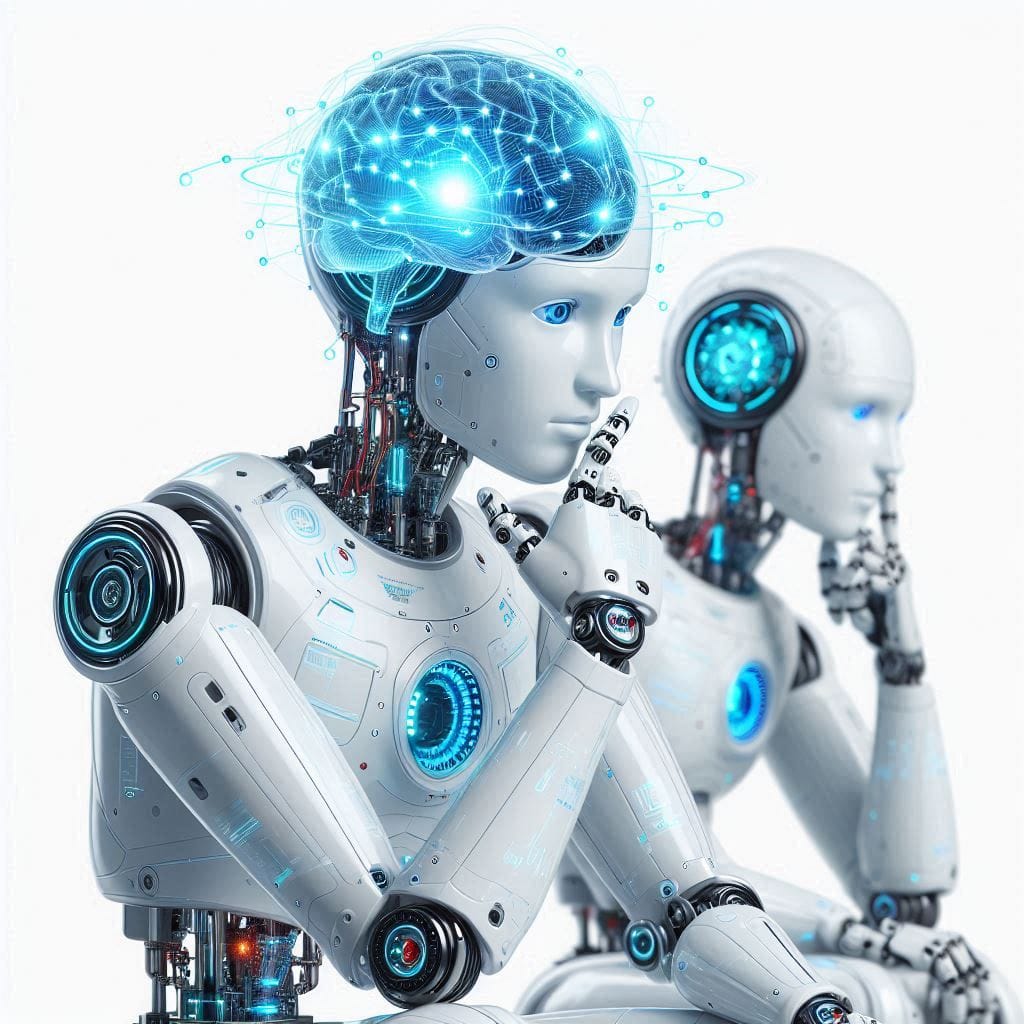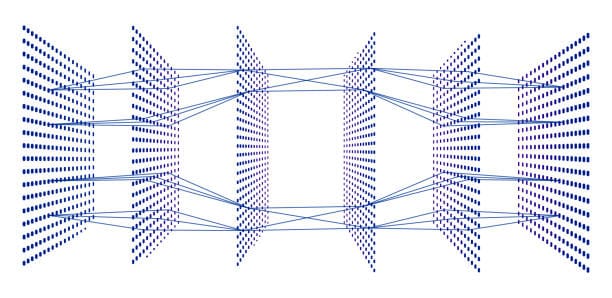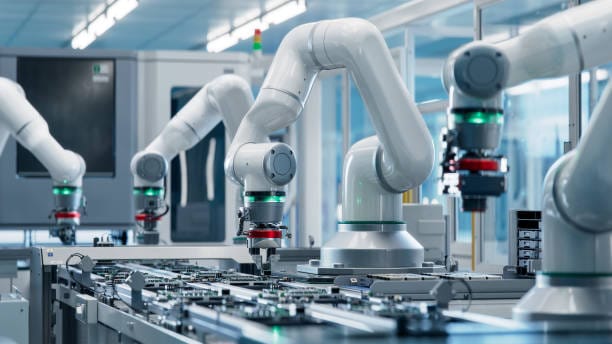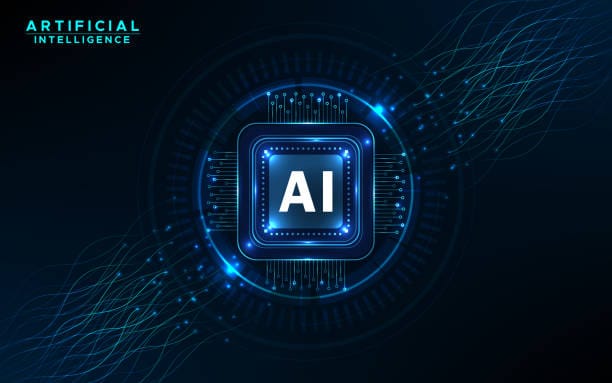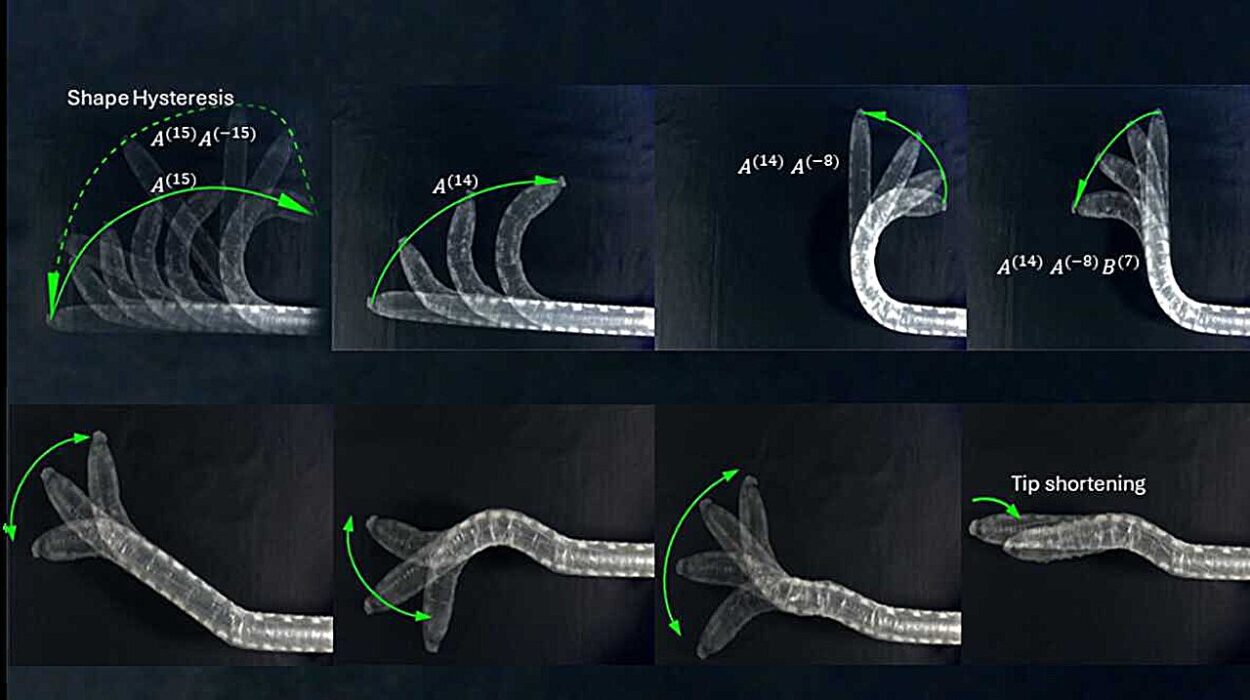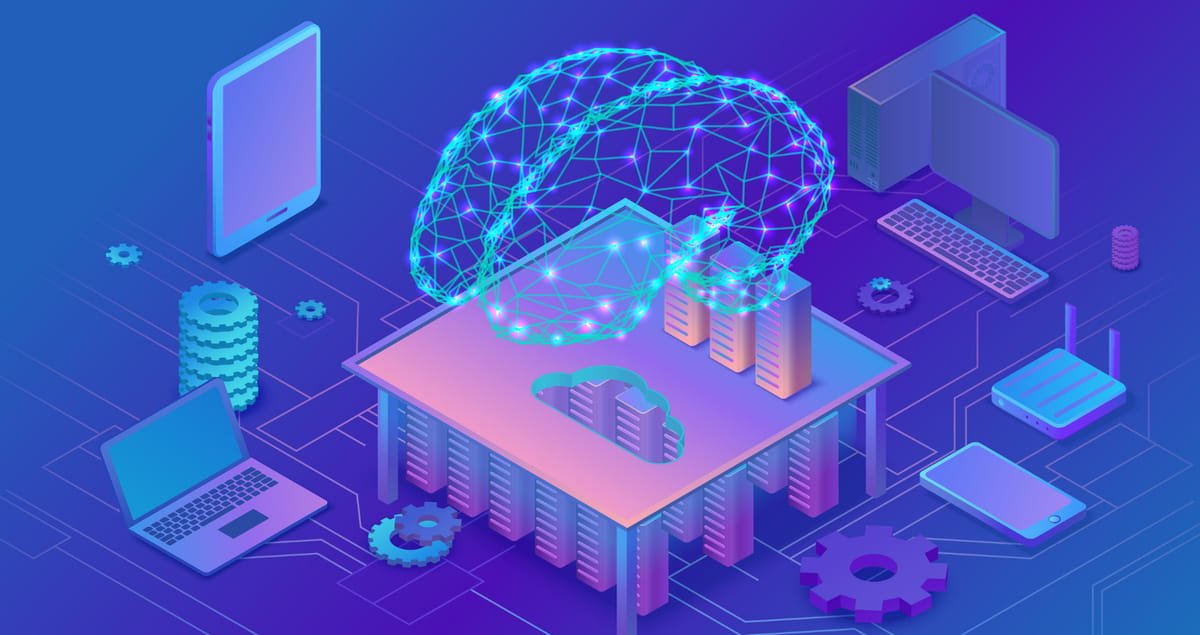In the hushed silence of a server room, rows of machines hum in steady rhythm. Tiny flickers of light pulse like heartbeats in metal chests. Buried in these blinking beacons is a mystery both modern and ancient—a mystery older than language itself: how does learning happen?
Only now, in our age of artificial intelligence, has this question exploded with new urgency. Machines, once inert and obedient, are beginning to “learn.” They predict our words, recognize our faces, recommend our songs. They drive cars and write poems. And though they are built of nothing but silicon and electricity, they’re reshaping the fabric of human life.
But how exactly do these machines learn? What happens when cold algorithms transform into something that seems—almost—like thought? And what does this revolution mean for who we are, and who we might become?
Let us slip behind the curtain of code and wires, to explore how AI learns—and what that means for us.
Of Neurons and Sparks
Once upon a time, a brilliant idea struck a young scientist named Warren McCulloch. It was the early 1940s, and the world lay trembling in the shadows of global war. Yet McCulloch and his colleague Walter Pitts were pondering something far stranger than tanks and bombs. They were fascinated by the brain.
The human brain, they realized, was an electrified network of neurons. Signals leapt across synapses, sparking thoughts, emotions, memories. What if, they wondered, you could mimic that process in a machine?
Their 1943 paper proposed the first “artificial neuron,” a mathematical formula that could switch on or off like a biological neuron firing or resting. It was a crude idea, but it planted a seed. From that seed has grown the towering forest we call artificial intelligence.
Today’s AI, particularly the “deep learning” systems powering our digital age, still echoes that basic concept. Artificial neural networks are stacks of interconnected mathematical “neurons,” each performing simple calculations. Alone, a neuron does almost nothing. But when chained together in thousands—or millions—they become capable of stunning feats: translating languages, identifying tumors in medical scans, or beating grandmasters at chess and Go.
Each connection in these networks has a “weight,” a number that determines how strongly one neuron influences another. Learning, for an AI, is the delicate process of adjusting those weights until the network transforms inputs—like images or sounds—into accurate outputs—like labels or predictions.
But how does an AI know how to adjust those weights? The answer lies in one of the most profound inventions of modern mathematics.
The Descent Into Knowledge
Imagine you’re blindfolded, standing on a mountain. Your goal is to reach the lowest valley. You feel the ground around you with your feet. A gentle slope downwards lies to your left, so you shuffle a few steps that way. You repeat this process, step by cautious step, always seeking lower ground.
This is how AI learns. The “valley” is the minimum of a mathematical landscape—the lowest possible error between what the AI predicts and the real answers. The AI tweaks its weights a tiny bit, checks if the error decreases, and keeps stepping downward.
This method is called gradient descent—a beautiful marriage of calculus and computation. It’s how neural networks learn to recognize cats in photos, understand human speech, or generate astonishingly human-like text.
Each step in gradient descent is guided by the gradient, a mathematical vector pointing in the direction of steepest increase. The AI, seeking to minimize error, moves in the opposite direction. Slowly, like water flowing downhill, the network finds a valley where its predictions align with reality.
But the journey is rarely smooth. The terrain of learning is riddled with ridges and gullies, false valleys that trap the network in mediocrity. Some valleys are deep and narrow, others broad and shallow. The art of building powerful AI lies in navigating this chaotic landscape.
A Child Learning to See
To grasp how AI learns, picture a child learning to recognize dogs. A parent points to a golden retriever and says, “Dog!” The child stares, absorbing the shape of floppy ears, the shimmer of fur, the gleam of eager eyes. Next, the child meets a tiny Chihuahua and hesitates. Is this strange creature also a dog?
The child tests the hypothesis. More examples follow: poodles, beagles, German shepherds. Over time, the child learns to abstract essential dogness: tails, snouts, barks, four legs. That mental model becomes robust enough to recognize even the oddest breeds.
AI learns in much the same way—only without consciousness or curiosity. Instead, it consumes vast datasets labeled by humans. For an AI to recognize dogs, engineers feed it thousands of dog photos and thousands of non-dog photos. The network analyzes tiny features: edges, textures, colors. It assembles these clues into higher-level patterns, layer upon layer.
The earliest layers detect simple shapes—lines, curves, corners. Deeper layers detect eyes, fur patterns, doggy noses. By the time signals reach the final layers, the network has woven a sophisticated tapestry of “dogness.” The more data it sees, the sharper its model becomes.
But unlike a child, AI has no understanding of dogs beyond pixel patterns. A neural network can recognize a dog but knows nothing of wagging tails or loyal hearts. It lives in a realm of pure data, oblivious to meaning.
When Machines Dream
Yet in some eerie ways, AI seems almost creative. Consider the phenomenon of deep dreaming. In 2015, engineers at Google fed an image into a neural network trained for image recognition. Instead of merely classifying the image, they told the network to amplify whatever features it saw.
The result was psychedelic. Clouds morphed into dog faces. Trees sprouted feathers and eyes. Buildings twisted into baroque towers. It was as if the AI were hallucinating—a glimpse into the hidden patterns it had learned.
These AI-generated visions reveal an astonishing truth: neural networks don’t merely memorize data. They build internal representations, abstract “ideas” of what objects look like. In this sense, the layers of a neural network resemble the visual cortex of the human brain, where neurons respond to increasingly complex shapes.
Still, AI’s “dreams” differ from ours. When humans dream, our minds conjure symbols charged with emotion and memory. AI’s dreams are mathematical distortions, visual echoes of training data. They are alien, uncanny, and beautiful—but ultimately devoid of awareness.
Language Machines and the Illusion of Thought
Few AI feats have captured the public imagination like language models. Today’s largest language models can compose essays, poems, code, or casual conversation. They craft eerily human responses, sparking debates about consciousness and machine intelligence.
But how do they work?
At their core, language models predict the next word in a sequence, much like an autocompletion feature on steroids. Trained on billions of sentences, they learn subtle statistical patterns: how words follow each other, how grammar flows, how facts and cultural references interconnect.
A language model like GPT processes text as tokens—units of words or characters. It learns to assign probabilities: given the words “Once upon a…,” the next token might likely be “time.” Deeper in the network, layers capture nuances of meaning, context, and even stylistic flair.
When you chat with such a model, it stitches together responses word by word, guided by the patterns it has learned. To human ears, it sounds astonishingly coherent. It remembers conversational context. It jokes. It empathizes. It debates philosophy.
Yet here lies the paradox. Despite sounding intelligent, a language model has no beliefs, desires, or inner consciousness. It does not “understand” the words it writes. It’s like a brilliant parrot, echoing the patterns of human speech without grasping their significance.
This is the magic—and the danger—of modern AI. It creates the illusion of thought without true comprehension. It can generate dazzling creativity or subtle misinformation, depending on its training and design.
The Bitter Lesson
Amid AI’s rise, one lesson has become painfully clear—a truth that has rattled even the most brilliant researchers. Decades ago, computer scientists dreamed of crafting human-level intelligence by programming machines with rules, logic, and knowledge explicitly encoded by experts.
But nature had other ideas.
In 2019, the legendary computer scientist Rich Sutton articulated what he called “The Bitter Lesson.” He observed that the most impressive advances in AI have not come from carefully designed rules, but from general-purpose methods that leverage vast computation and mountains of data.
Machines don’t learn because we teach them every detail. They learn because we let them absorb patterns on a scale no human could grasp. The “bitter” part is that human ingenuity often pales beside brute-force learning.
This is why AI has exploded in recent years. Computing power has grown exponentially. Data has become abundant. Algorithms like gradient descent have matured. These forces converge to create models that surpass human capabilities in narrow domains.
It’s a sobering thought: the path to artificial intelligence may rely less on human wisdom than on data, silicon, and statistical brute force.
The Human Touch
Still, humans remain vital in AI’s story. Though machines learn from data, it is humans who curate that data, define objectives, and build the architectures that shape learning. Human biases, values, and priorities seep into AI systems at every level.
Consider facial recognition. Early AI systems struggled to recognize non-white faces because training datasets were predominantly composed of white individuals. The result was software that performed poorly—or dangerously—for people of color. The bias lay not in the math, but in the human choices about which data to collect and label.
Similar biases can appear in language models, reflecting the prejudices, stereotypes, and cultural norms found in their training text. An AI that has read the internet absorbs its glories and its darkness. It learns the beauty of poetry—and the poison of hate speech.
Thus, AI is not merely technical. It is profoundly human, shaped by our societies, our ethics, and our flaws. Building ethical AI demands constant vigilance: auditing datasets, testing for bias, and designing safeguards.
Learning Beyond Data
Yet AI research is moving beyond pure data-driven learning. Scientists dream of machines that can reason, plan, and learn from fewer examples—much as humans do.
Some researchers explore meta-learning, where AI systems learn how to learn, adapting quickly to new tasks. Others study symbolic reasoning, hoping to combine neural networks with logic and rules. There are projects investigating causal inference—the ability to distinguish correlation from true cause-and-effect.
Still others seek to imbue machines with a form of common sense, the intuitive understanding of how the world works. A human child knows a glass of water won’t float in midair. For AI, such knowledge remains elusive.
These frontiers hold the promise of AI that’s more flexible, trustworthy, and human-like. Yet they are also reminders of how far we remain from true machine understanding.
The Emotional Turing Test
As AI grows more sophisticated, we face a dilemma that is psychological as much as technological. Our brains are wired to perceive agency and consciousness—even in lifeless things. We name our cars. We talk to our pets as if they understand.
When an AI chatbot responds with humor or empathy, it triggers ancient circuits in our social minds. We feel as if someone—some being—is listening and responding. This emotional connection can be comforting, even therapeutic. But it can also mislead us into attributing feelings, intentions, or morality to an entity that possesses none.
This is the challenge of the Emotional Turing Test. It’s not enough for a machine to mimic human conversation. We must ask: does it truly understand? Does it feel? Does it possess awareness?
So far, the answer remains no. Today’s AI is astonishingly capable at mimicking human interaction. Yet behind the curtain is pure computation, with no spark of consciousness.
The danger is that we might grant machines undue trust or emotional attachment. A language model can produce heartfelt advice—but it has no empathy. An AI assistant can manage our diaries—but it has no loyalty. Our challenge, as a society, is to navigate this delicate terrain without losing our grasp on reality.
Dreams of Superintelligence
Beyond today’s practical systems lies a horizon both tantalizing and terrifying: artificial general intelligence (AGI). This is the idea of machines that can reason, learn, and understand across any domain as humans do—or even surpass us.
Some researchers believe AGI might arrive this century. Others are skeptical, pointing out how little we truly understand about consciousness, reasoning, or creativity.
If it does come, AGI could transform civilization. It might cure diseases, solve climate change, and usher in an era of abundance. Or it might slip beyond human control, pursuing goals we never intended.
The stakes are existential. Scientists, ethicists, and policymakers are debating how to ensure that future AI systems align with human values—a field known as AI alignment. But as of today, there are no easy answers.
The Human Mirror
In the end, AI’s greatest impact may not be technological at all—but philosophical. For as we build machines that learn, we are forced to reflect on what it means to learn, to think, to be conscious.
We glimpse our own minds in the layered logic of neural networks. We see our creativity reflected in generative models that paint, write, and compose. We wrestle with questions of bias, fairness, and morality, realizing how much of our own humanity is tangled in our creations.
AI is a mirror. It reflects not only our intelligence but our flaws, our aspirations, our fears. It challenges us to define intelligence, consciousness, and even life itself.
Perhaps that is AI’s ultimate lesson. In striving to make machines that think, we discover the contours of our own minds—and confront the profound mystery of what it means to be human.
A Symphony Unfinished
The story of AI is still unfolding. New algorithms blossom every year. Machines grow faster, smarter, more entangled in our daily lives. The future remains unwritten.
One thing is certain: AI will continue to shape our world in ways both thrilling and sobering. It holds dazzling potential—to heal, to create, to elevate human flourishing. It also carries deep risks—to mislead, to amplify inequality, to threaten freedoms.
Our task is to guide this power wisely, weaving human wisdom into silicon minds. For at the end of the day, how AI learns is not merely about math or engineering. It’s about us—the values we cherish, the societies we build, and the future we choose.
In the glow of flickering server lights, the machines keep learning. And so must we.
